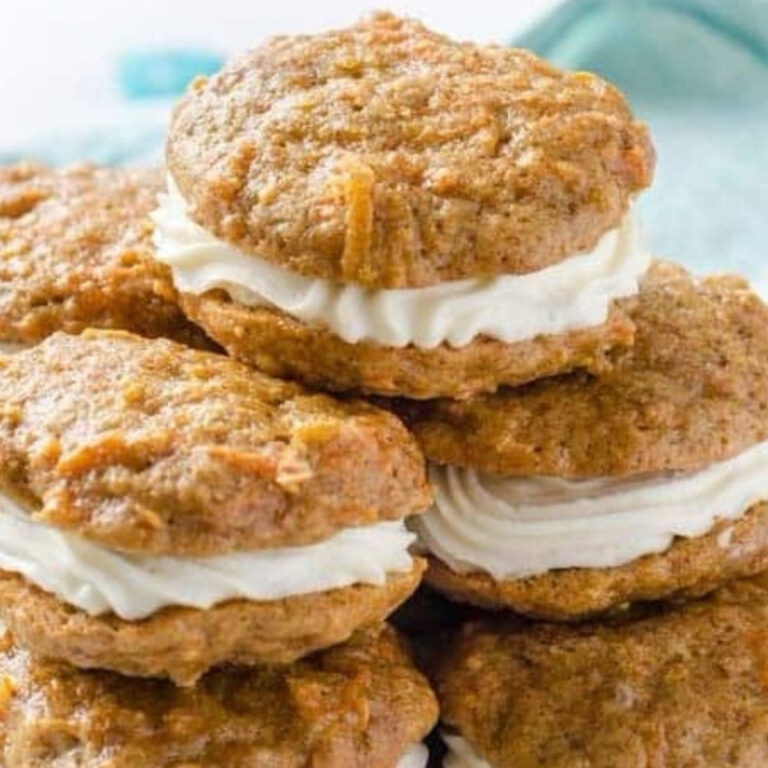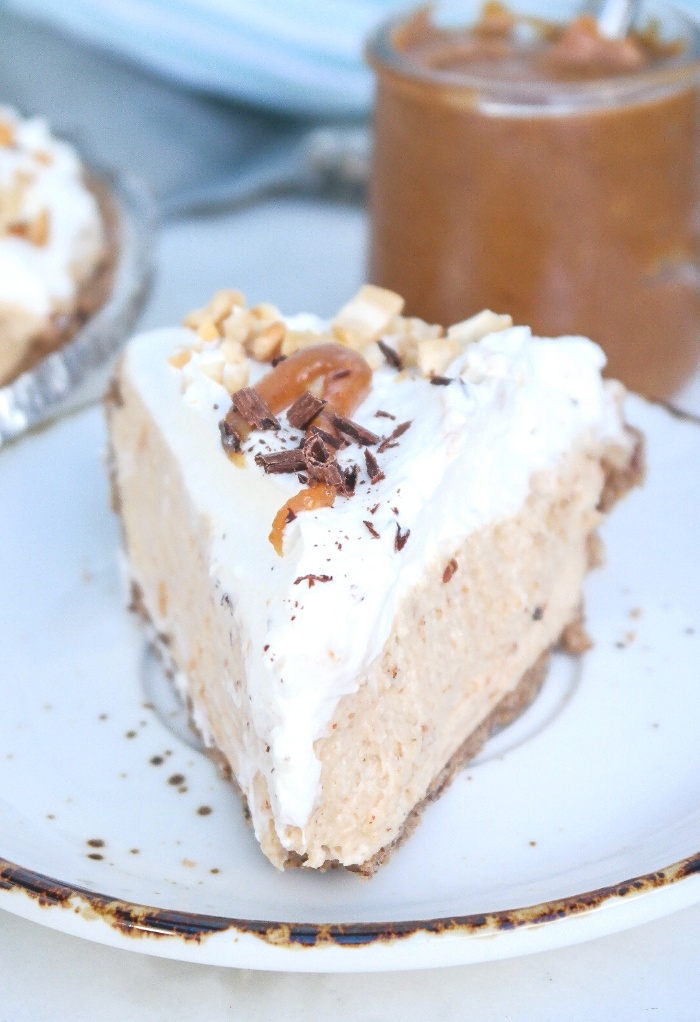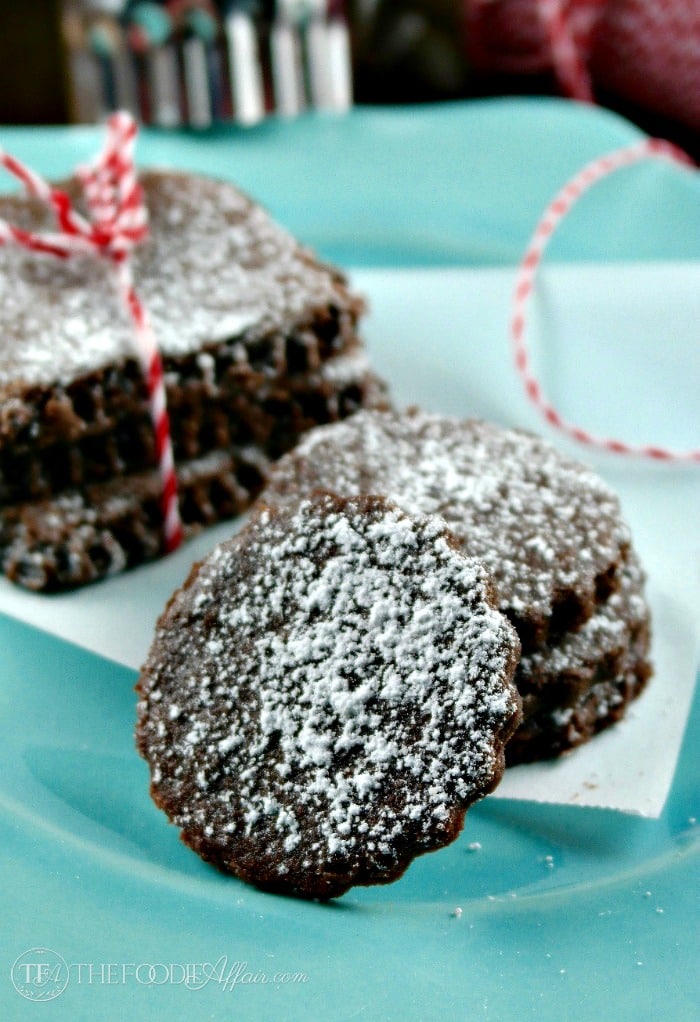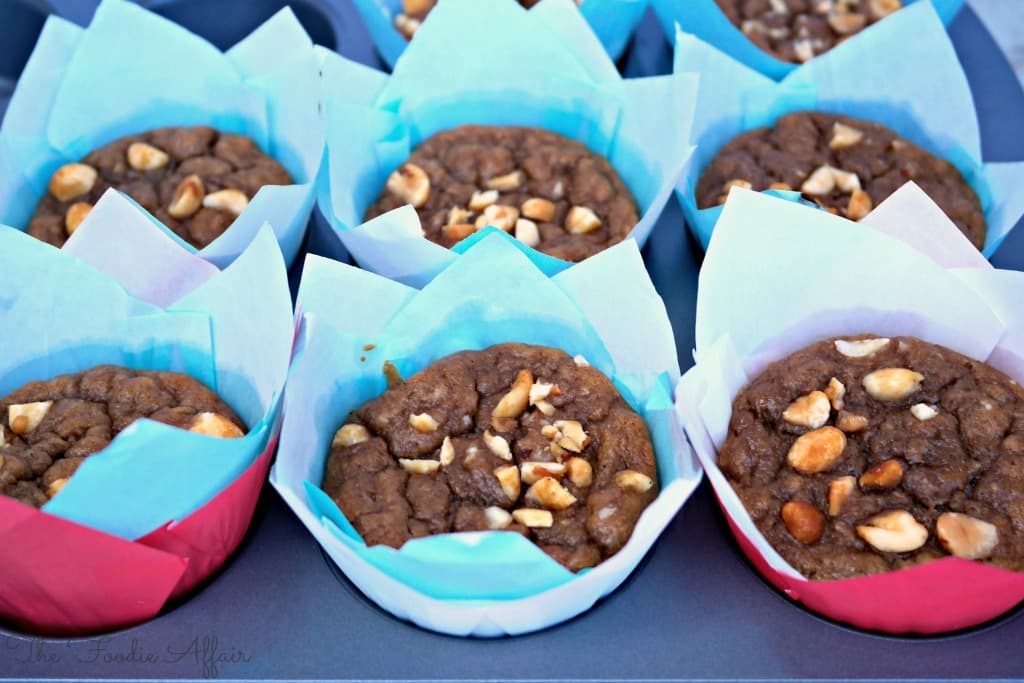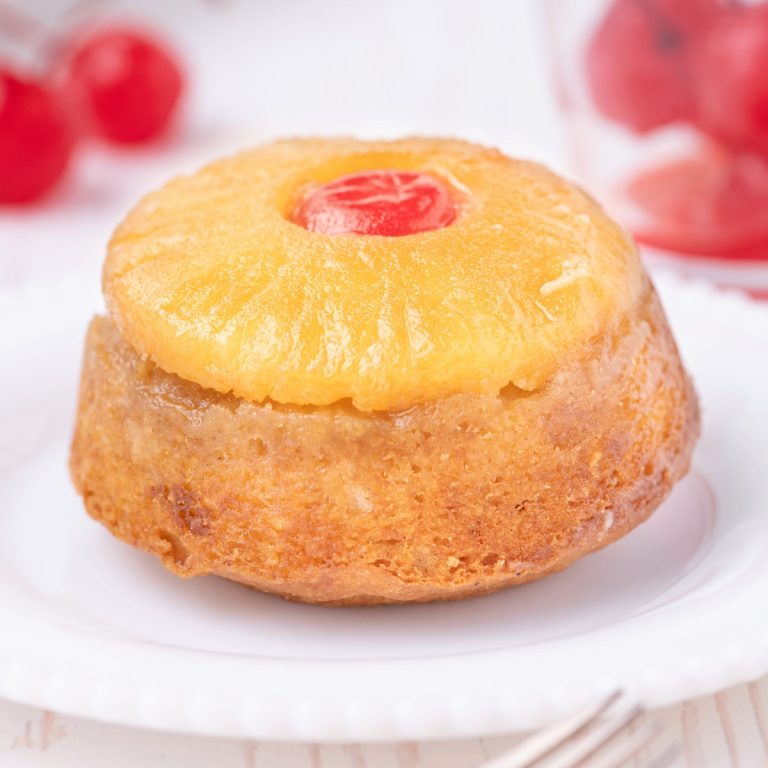Simple St. Patrick’s Day Sheet Cake Recipe
This rich and delicious St Patrick’s Day Cake is flavored with Guinness beer, which enhances the chocolate notes. The cake’s sweet, savory, and malty flavors will entice your tastebuds for a second or third bite!
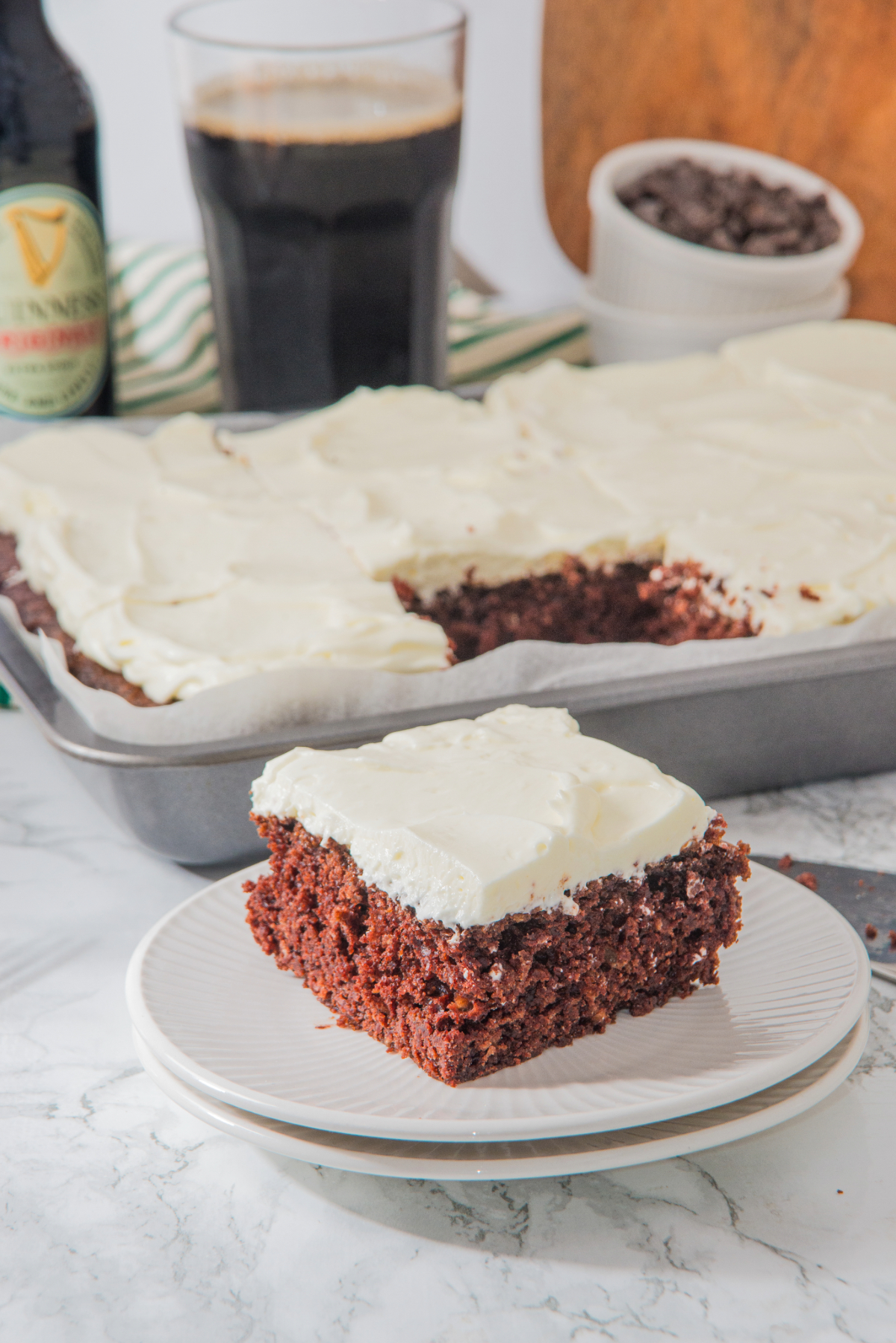
Are you looking more St. Patrick’s Day recipes? Whip up a batch of this homemade Irish Cream and then use it in these Cheesecake Brownies with Irish Cream for another sweet treat!
Table of Contents
Why You’ll Love This Recipe
- This is a fun cake to bake, especially for an adult-themed St. Patrick’s Day celebration!
- This cake isn’t overly sweet. You’ll be pleasantly surprised by how flavorful the stout enhances the chocolate.
- The rich, creamy frosting perfectly complements the moist chocolate cake, making each bite irresistible.
- It’s a crowd-pleaser! Guests will love the unique flavor you get from adding Guinness to a dessert.
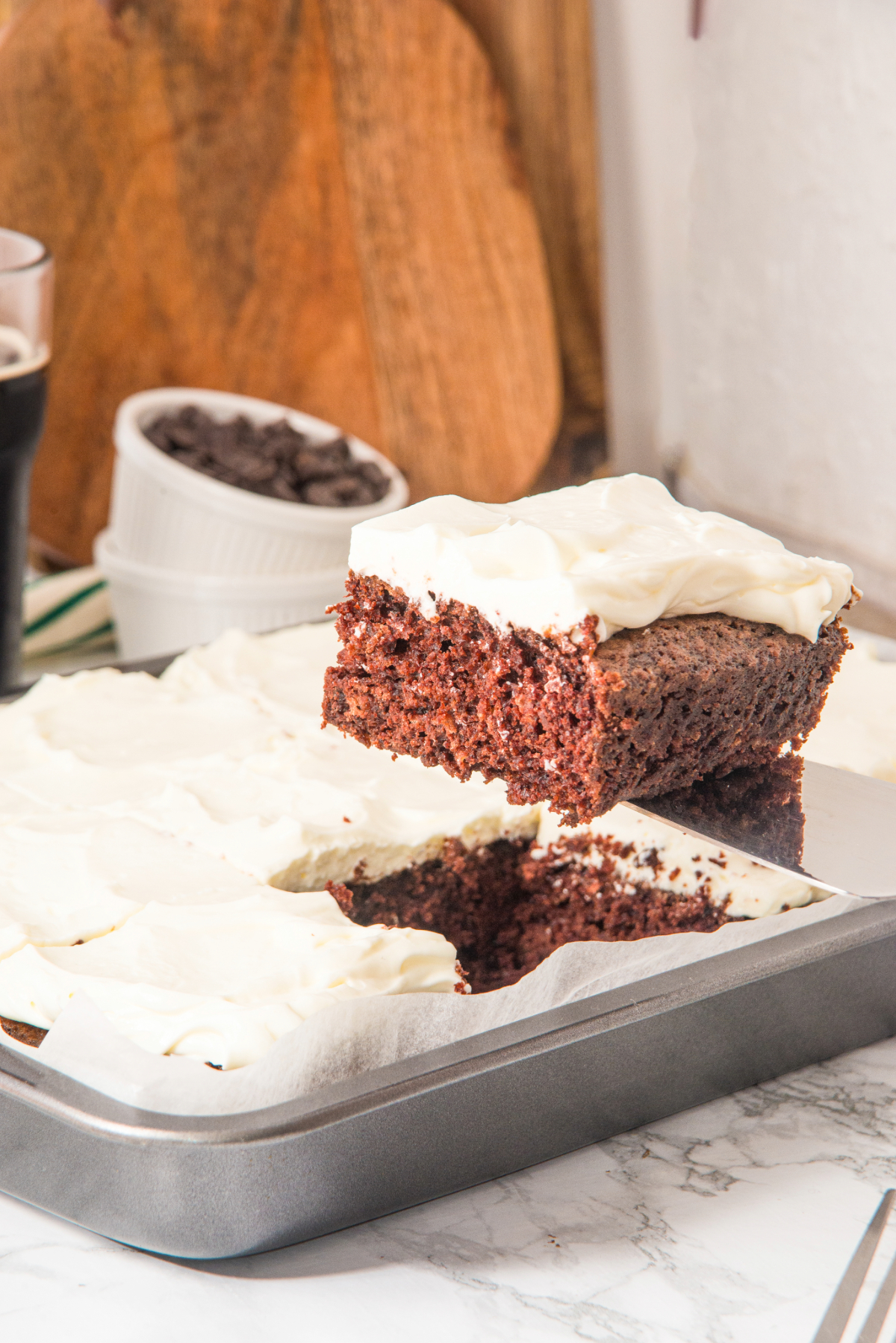
Equipment Needed
- small saucepan
- sifter
- large bowl
- whisk
- 9×13 baking sheet
- toothpick or cake tester
- large mixing bowl
- electric mixer
Ingredients
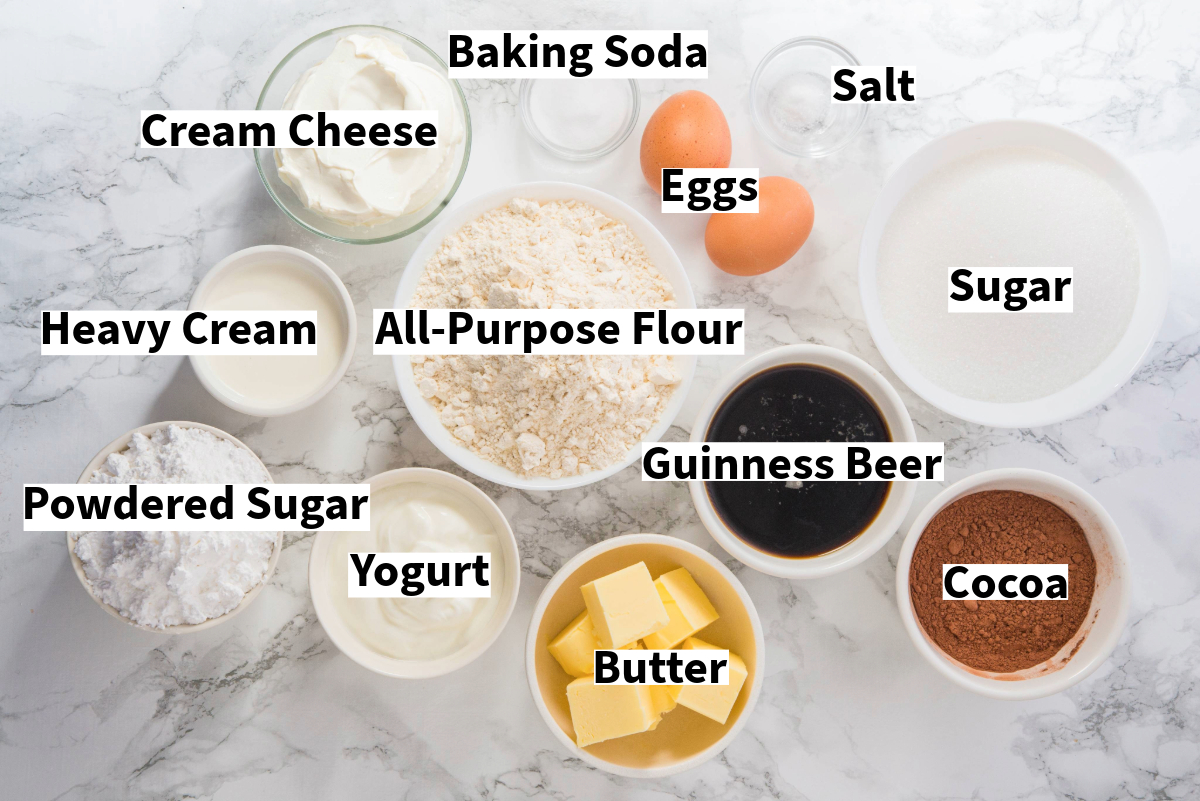
This is a list of the ingredients that you need to make your grocery shopping easier. You can find the full list of the ingredients and amounts needed in the recipe card at the bottom of this post.
- Guinness – If you don’t have this brand on hand, any type of dark lager would work.
- Butter – I always use unsalted butter when I’m baking desserts like this one.
- Cocoa powder – This recipe calls for unsweetened cocoa powder. I like to use Dutch-processed cocoa powder because it has a richer, more intense flavor.
- Granulated sugar – Regular granulated sugar works perfectly for this recipe.
- Eggs – This recipe calls for large eggs to help bind the cake together to add moisture.
- Plain yogurt – The secret ingredient that makes this cake moist and flavorful! You can also substitute sour cream if desired.
- All-purpose flour – All-purpose flour is used in this recipe. If you want to make this cake gluten-free, you can substitute it with a gluten-free all-purpose flour blend.
- Baking soda – This is a leavening agent that helps the cake rise.
- Salt – Just a pinch of salt helps balance out the sweetness of the cake.
- Powdered sugar – This powdered sugar is used in the frosting to give it a smooth, creamy texture and added sweetness.
- Cream cheese – The base for this delicious cream cheese frosting. Make sure to soften it before using it.
- Heavy cream – This ingredient is used in the frosting to add moisture and make it nice and fluffy.
How to Make This St. Patrick’s Day Sheet Cake
This is a quick overview of the step-by-step instructions for making this recipe. You can find the complete list of instructions in the printable recipe card at the bottom of this post.
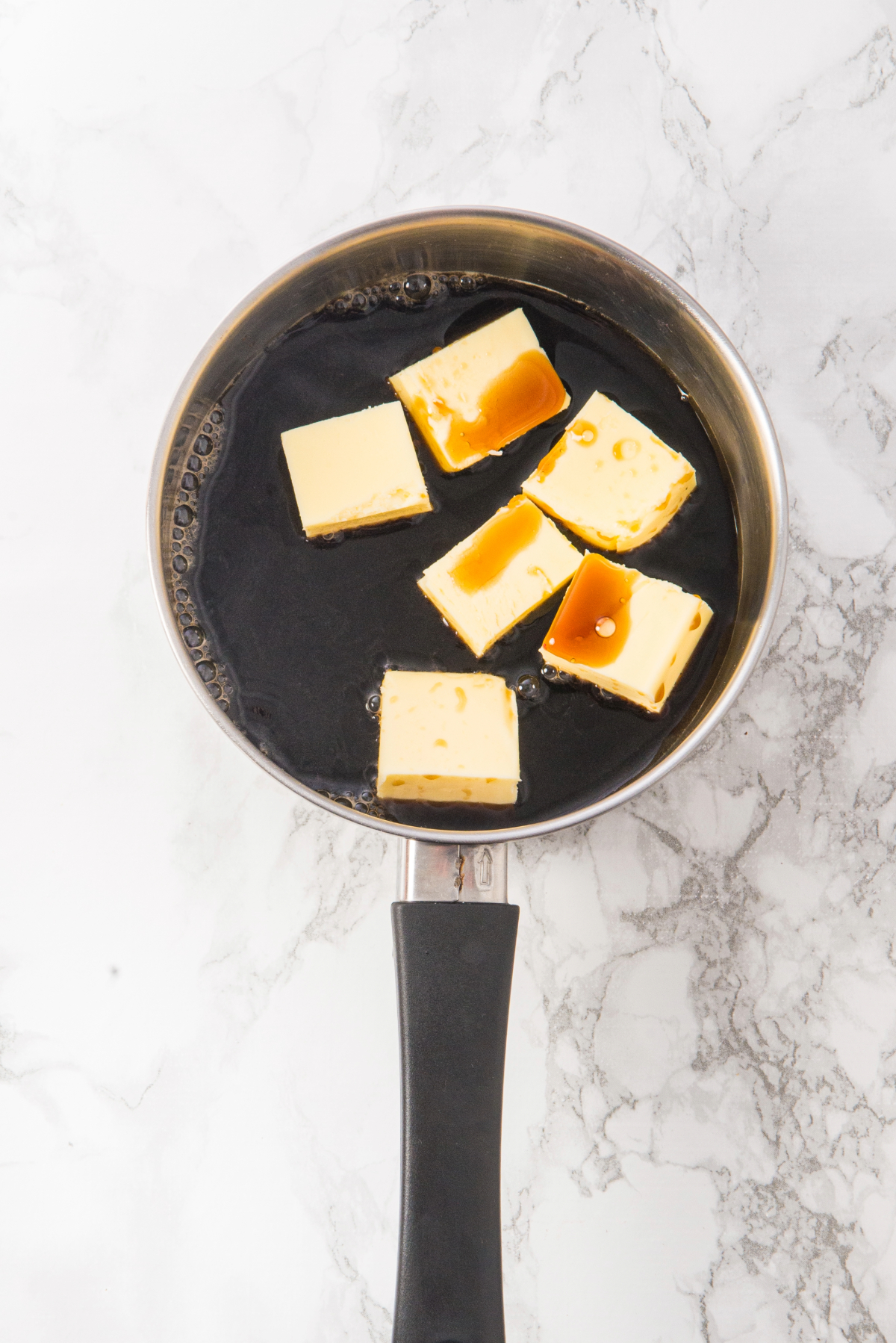
- In a small saucepan, combine the beer and butter. Heat over medium heat stir until the butter has melted. Remove from the heat. Add the cocoa powder and sugar and mix.
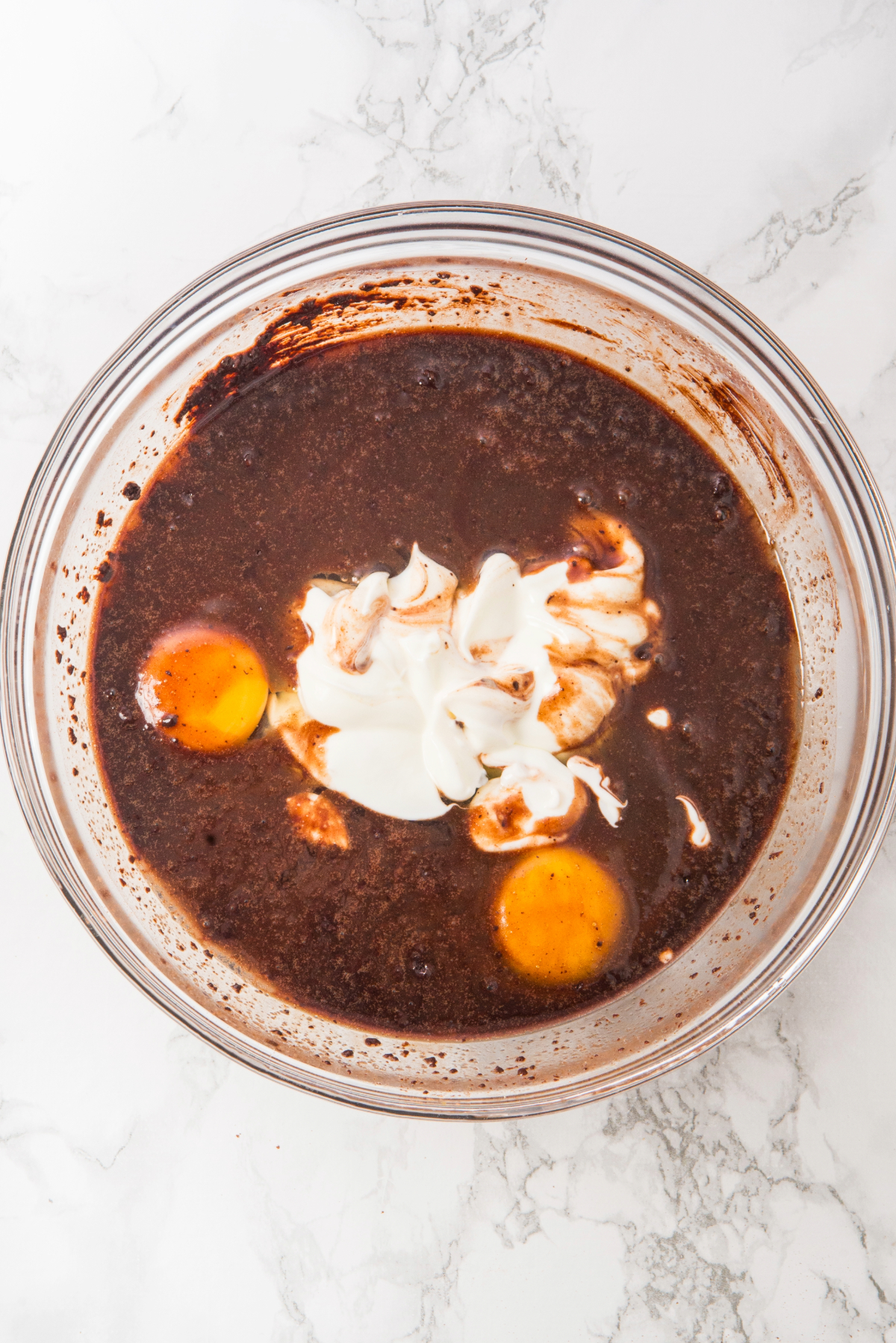
- Add the eggs, vanilla extract, and yogurt to the mixture. Whisk by hand until full incorporated. Add the dry ingredients and whisk gently.
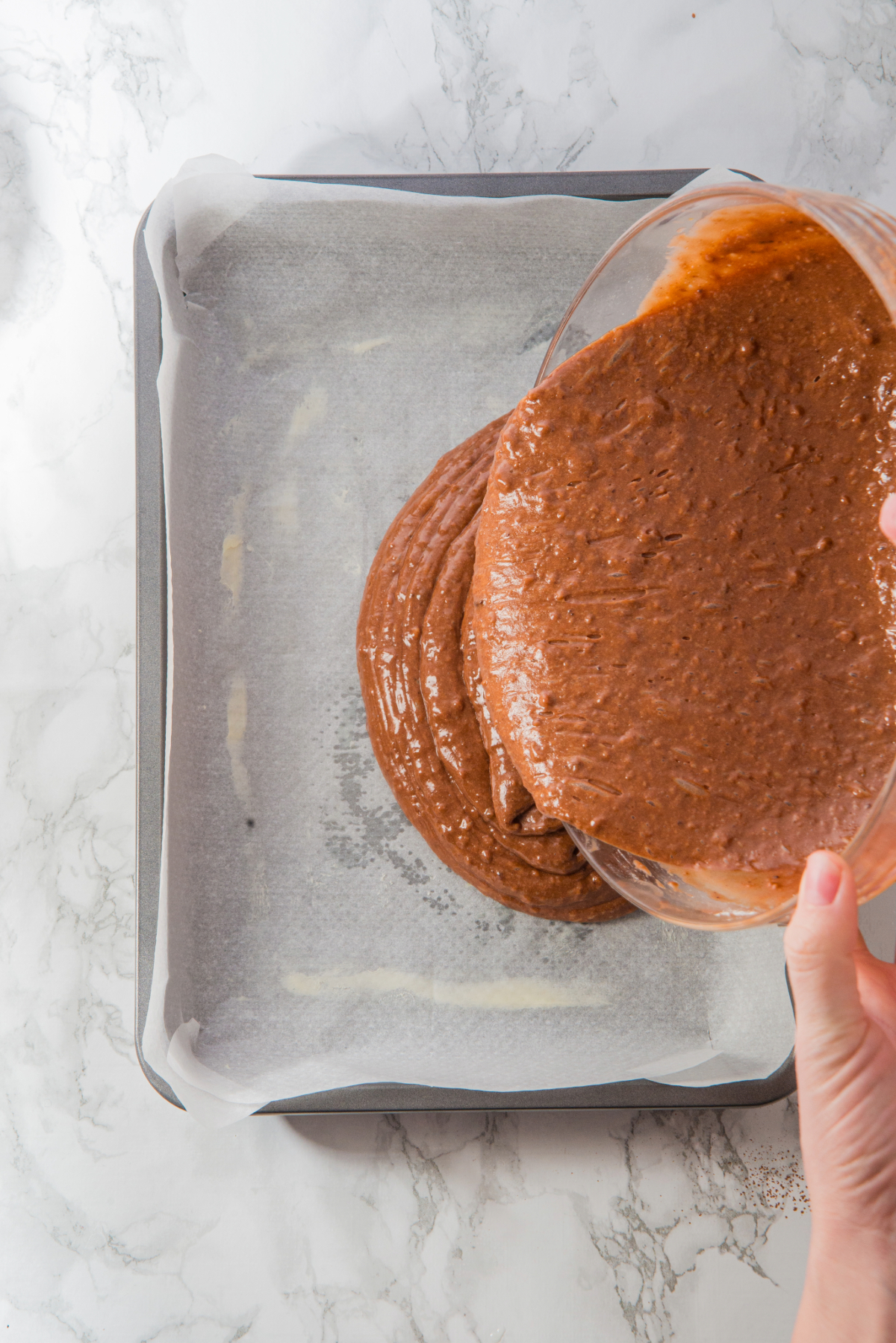
- Line a 9.5 x 13.5 inch (24 x 34 cm) baking sheet with parchment paper. Pour the batter into the pan and spread evenly. Bake in a 350 degree preheated oven for 30 minutes.
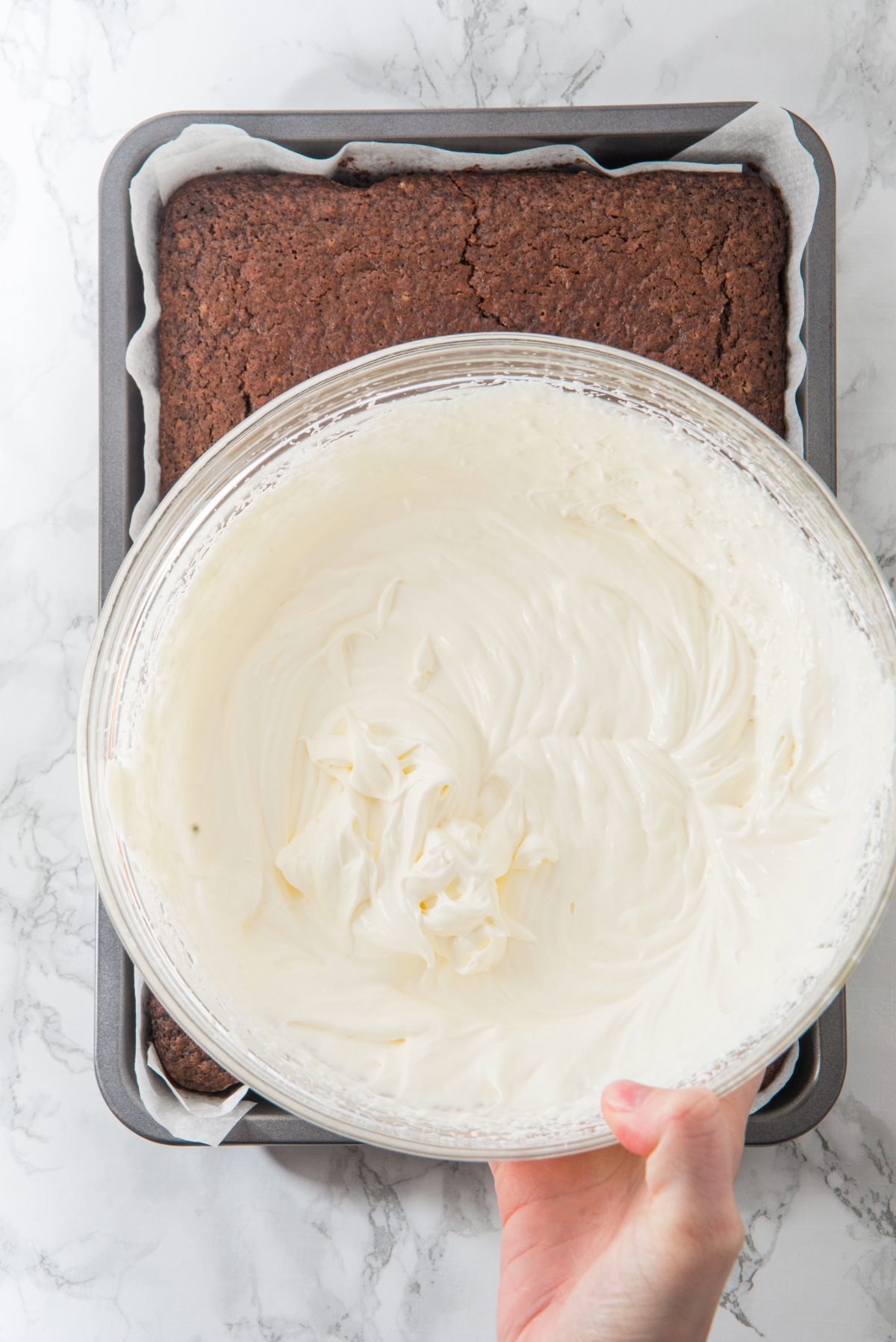
- Once the cake is completely cooled make the frosting. In a bowl combine the heavy cream and powdered sugar. Beat in the cream cheese until fluffy.

- Once the frosting is fully whipped place dollops of the frosting on top of the cake.

- Gently spread the frosting on the cake.
What To Serve With This Dish
I love to serve this Guinness Cake with our traditional St. Patrick’s Day meal of Slow Cooker Corned Beef and Cabbage with a side of Irish Soda Bread.
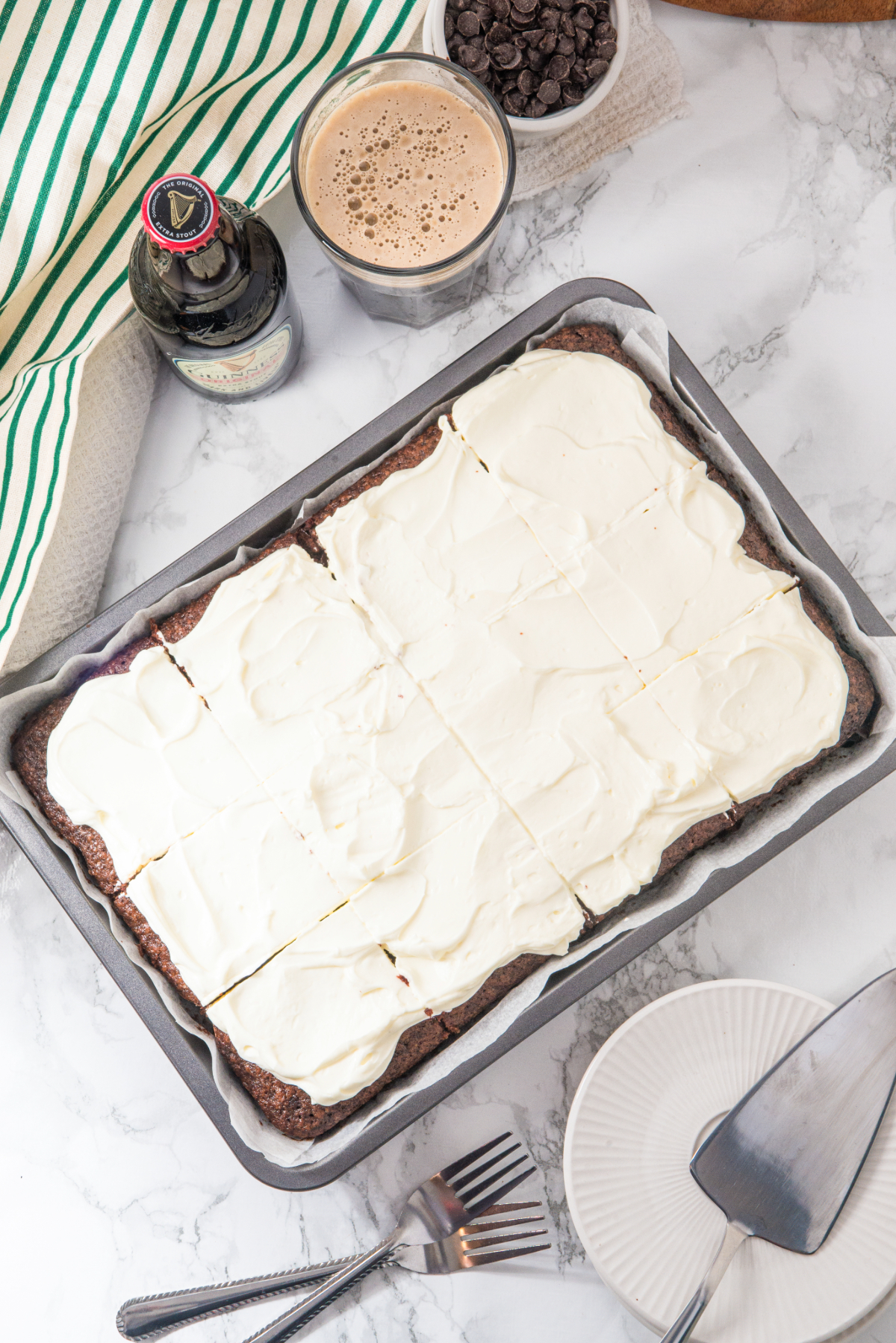
Substitutions and Additions
- If you prefer to make this a non-alcoholic dessert, you can substitute the beer with an equal amount of strong brewed coffee or stout-flavored soda. Both will give the cake a rich and deep flavor without the alcohol.
- Consider adding chocolate chips to the batter for bites of melty chocolate in every slice. Or try sprinkling on some toasted nuts, like pecans or walnuts, for a delightful crunch.
- While the cream cheese frosting goes with the Guinness cake perfectly, you can switch it up by using a whipped chocolate ganache or a simple vanilla buttercream as well.
How To Store
Storage – Store the frosted cake in an airtight container in the fridge for up to 5 days. Make sure to let it come to room temperature before serving for the best flavor and texture.
Freezing – You can also freeze the unfrosted cake for up to 3 months. Wrap it tightly in plastic wrap and place it in a freezer-safe bag or container. When ready to serve, let it thaw completely before frosting and serving as desired.
Sandra’s Pro Tips
- When combining the wet and dry ingredients for the cake batter, mix just until incorporated. Overmixing can lead to a dense cake.
- For easier frosting and cleaner edges, refrigerate the cake for 30 minutes to an hour before applying the frosting.
- Add a personal touch by garnishing the cake with chocolate shavings, a dusting of cocoa powder, or even a drizzle of caramel sauce.
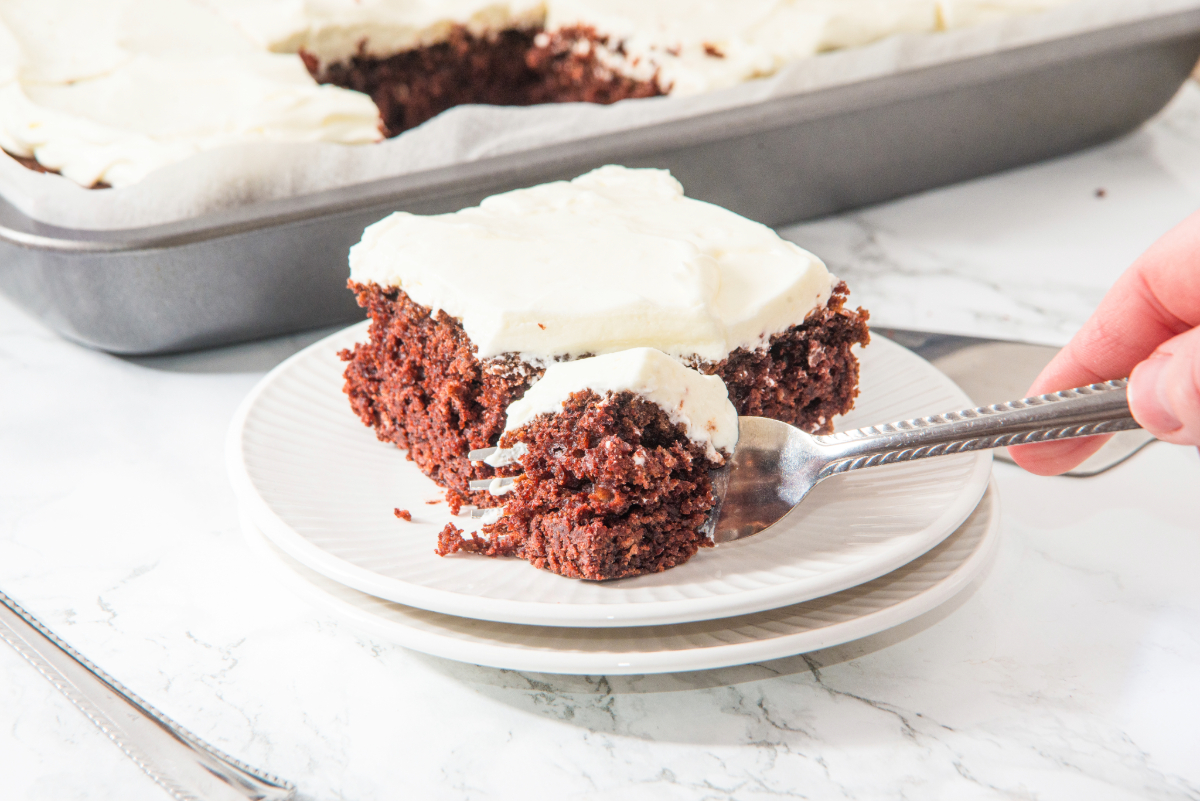
FAQs
Do you have questions about this St. Patrick’s Day Cake recipe? Here are the answers to the most commonly asked questions for this recipe.
Absolutely! You can bake the cake a day or two ahead and store it, unfrosted, in an airtight container at room temperature or in the fridge. When ready to serve, frost and decorate as desired.
Yes, you can experiment with other dark beers, like a porter. Just make sure it’s a rich, malty beer to maintain the cake’s signature depth.
The alcohol in the Guinness mostly cooks off during baking, but if you’d prefer a completely non-alcoholic version, use one of the substitutions mentioned earlier for a kid-friendly treat.
Other Delicious Cake Recipes You May Enjoy

Simple St Patrick’s Day Cake Recipe
Equipment
- small saucepan
- Sifter
- Large bowl
- whisk
- 9×13 baking sheet
- toothpick or cake tester
- Large Mixing Bowl
- electric mixer
Ingredients
For the Cake:
- 1 cup Guinness 220 ml or other dark beer
- 10 tablespoons unsalted butter 140g
- 1/2 cup cocoa powder 65g
- 1 ¾ cups graulated sugar 390g
- 2 eggs large at room temperature
- 1 cup plain yogurt 240g
- 2 cups + 3 tbsp all-purpose flour 275g
- 2 ½ tsp baking soda
- ¼ tsp salt
For the Frosting:
- 1 1/4 cups powdered sugar
- 1 cup cream cheese 240g
- 1 cup heavy cream 240ml
Instructions
Prepare the cake:
- In a small saucepan, combine the beer and butter. Heat over medium heat stir until the butter has melted. Remove from the heat.
- Add the sifted cocoa powder and sugar to the beer-butter mixture. Stir until smooth and well combined.
- Add the eggs, vanilla extract, and yogurt to the mixture. Whisk by hand until full incorporated.
- Add the dry ingredients (flour, baking soda, and salt) directly into the bowl.
- Gently whisk until there are no lumps, but avoid overmixing.
- Line a 9.5 x 13.5 inch (24 x 34 cm) baking sheet with parchment paper. Pour the batter into the pan and spread evenly.
Bake:
- Preheat your oven to 350°F (180°C).Bake the cake for 30 minutes. Check doneness by inserting a toothpick into the center. A few crumb on the toothpick, the cake is ready.
- Let the cake cool completely before adding the frosting.
Prepare the Frosting:
- In a bowl, combine the heavy cream and powdered sugar.
- Add the cream cheese and continue beating until the frosting is smooth and holds its shape.
Assemble:
- Once the cake has cooled completely, spread the frosting evenly over the surface.
Notes
- When combining the wet and dry ingredients for the cake batter, mix just until incorporated. Overmixing can lead to a dense cake.
- For easier frosting and cleaner edges, refrigerate the cake for 30 minutes to an hour before applying the frosting.
- Add a personal touch by garnishing the cake with chocolate shavings, a dusting of cocoa powder, or even a drizzle of caramel sauce.
Nutrition
Disclaimer
Please note that the nutritional information provided are guidelines and may vary based on the brand of products used. For your specific nutritional goals use My Fitness Pal or Verywell Fit recipe calculators. All content within this site is not intended as medical diagnosis or treatment and should not be considered a substitute for professional medical expertise.


